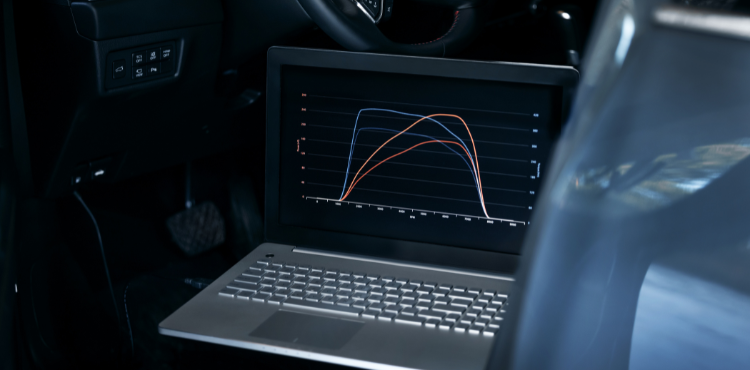Definition of Management Software
Management software is a type of software used to manage and automate business processes, such as human resources, finance, logistics, production, and accounting.
In practice, management software helps collect, process, organize, and analyze business information to enable planning, control, and optimization of business processes.
How do management software work?
Management software works through a process of collecting, processing, and analyzing business information to enable management and optimization of business processes.
The process of how management software works varies based on their specific function and the business processes they manage, but in general, these are the steps they follow.
- Data collection: the management software collects information from various business departments and organizes it into a centralized database.
- Data processing: the management software uses data processing algorithms to analyze the collected information and generate reports and analyses.
- Process monitoring: the management software constantly monitors business processes to detect any anomalies or issues and provide useful information for decision-making.
- Process automation: the management software can automate some business activities, such as invoice issuance or inventory management, reducing the time and errors associated with these activities.
- Report generation: the management software provides detailed reports on various aspects of the company, such as financial status, order status, production, and personnel management, allowing management to make informed decisions.
In summary, management software works as an integrated system for managing business information and processes, improving the efficiency and productivity of the company.
Types of management software
There are various types of management software, which can be classified based on their primary function. Here are some examples.
- Production management software (MES): systems that help plan and manage production, monitor order status, manage inventory, and coordinate staff activities.
- Human Resources Management software (HRM): these software tools assist in managing company personnel, including managing absences, competencies, salaries, and performance.
- Accounting software: these management software tools support the management of the company’s accounting, including invoicing, payment management, and tax management.
- Logistics management software (WMS): software that manages warehouses, movement of goods, and shipment tracking.
- Customer Relationship Management software (CRM): systems used to manage contacts, from sales opportunities to post-sales services.
- Supply Chain Management software (SCM): software that manages the entire supply chain of the company, including managing suppliers, orders, and inventory.
- Financial management software: systems that control the company’s financial activities, including managing budgets, cash flow, and investments.
These are just some of the types of management software available on the market. Generally, management software is designed to meet the specific needs of a company and improve the efficiency and productivity of business processes.
Examples of commonly used management software
Accounting software
Accounting management software is a type of software that helps companies manage their accounting more efficiently and accurately. These management software can automate many accounting activities, such as issuing invoices, managing payments, recording financial transactions, and preparing balance sheets.
Some common features of accounting management software include the following.
- Invoice management: allows you to issue and send invoices to customers, keep track of issued and received invoices, and monitor payment status.
- Transaction recording: allows you to record financial transactions, such as customer payments and business expenses.
- Balance sheet preparation: these management software can help prepare the company’s balance sheet by providing an overview of the company’s revenues and expenses.
- Deadline management: keeps track of tax deadlines and deadlines for filing tax returns to avoid fines or penalties.
- Reporting: generates detailed reports on the company’s financial situation, such as the balance sheet, income statement, and status of invoices.
Warehouse Management Software
Warehouse Management Software (WMS) is designed to help businesses manage their warehouse operations more efficiently. These software solutions allow users to monitor item availability, stock location, goods movement, and order management.
Some common features of Warehouse Management Software include.
- Stock management: allows users to monitor item availability in the warehouse, keep track of quantities, expiry dates, and production lots.
- Goods movement: enables users to track the location of stock in the warehouse and manage the movement of goods from arrival to shipment to customers.
- Order management: these software solutions allow users to manage orders, keep track of order status, and coordinate order preparation and shipment.
- Space optimization: optimizes storage space by suggesting where to place items to maximize use of available space.
- Performance monitoring: allows users to monitor warehouse performance, such as staff productivity, order preparation speed, and inventory accuracy.
Software for e-commerce
E-commerce management software is designed to help companies manage their online sales activities more efficiently. These software packages automate many activities, such as order management, inventory management, and product shipping.
Some common features of e-commerce management software include the following functions.
- Order management: allows online orders to be managed, tracked, payment to be monitored and communication with customers.
- Inventory management: manages inventory, keeps track of stock, monitors product availability, and automates the reordering of items.
- Shipping management: handles product shipments, automates the order fulfillment process, and tracks shipments.
- Integration with online sales channels: can integrate with online sales channels such as Amazon and eBay, allowing all sales channels to be managed from a single platform.
- Reporting: can generate detailed reports on online sales activities such as sales, profits, and inventory.
Software for production
Production management software is designed to help companies manage production activities more efficiently. These software tools enable many activities to be automated, such as production activity management, inventory management, and production planning.
Some of the common features of production management software include the following.
- Production activity management: manage production activities, from quality control to production lead times.
- Inventory management: these management software tools allow for inventory management, tracking materials used and available stock.
- Production planning: allows for production planning based on customer demand and available resources.
- Workforce management: manage the workforce, assigning specific tasks to workers and monitoring work times.
- Cost monitoring: monitor production costs, track expenses, and calculate profit margins.
ERP Management Software
Enterprise Resource Planning (ERP) software is designed to help companies integrate and efficiently manage all of their business processes. An ERP management software allows for a global and centralized view of all business activities, facilitating planning, control, and resource management.
The main functionalities of an ERP management software include important features such as the following.
- Management of business activities: an ERP system allows for integrated management of all business activities, including production, logistics, finance, human resources, supply chain management, sales, and marketing.
- Data integration: it integrates all business data into a single platform, facilitating collection, analysis, and sharing of information across departments.
- Process automation: it automates many business processes, reducing processing times and errors.
- Cost control: it allows for monitoring of costs, tracking cash flows, and calculating profit margins.
- Reporting and analysis: it generates real-time reports and analysis, providing a detailed view of business activities.
Advantages for companies
There are many advantages for companies in adopting management software systems. Below are some of the main benefits.
- Greater efficiency: automates many business processes, reducing processing time and errors and improving overall efficiency of the company.
- Greater visibility: allows for a global and centralized view of all business activities, facilitating planning, control, and resource management.
- Better inventory management: helps track inventory in real-time, monitoring stock levels and reducing the risk of stockouts or overproduction.
- Improved production planning: enables planning of production based on customer demand and available resources, improving production efficiency and customer satisfaction.
- Greater cost control: monitors costs, tracks cash flows, and calculates profit margins, providing greater visibility on the company’s costs.
- Better collaboration and communication: shares information across departments and facilitates collaboration among team members.
- Better regulatory compliance: helps comply with industry regulations and standards, improving company compliance and reducing the risk of sanctions.
How to choose the right management software for you
Have you ever wondered what the best management software is for your needs? Choosing the right management software for your business can be a difficult decision. Here are some tips that can help you choose the right management software for your specific needs.
- Identify your business needs: The first thing to do is to identify your business’s specific needs and what you want to achieve from the management software. For example, if your business needs to manage inventory, it will be important to look for management software with inventory management functionality.
- Evaluate your budget: It is important to evaluate the budget available for the management software and find a product that fits your business needs without exceeding the budget.
- Check scalability: The management software should be able to grow with your business and adapt to future business needs. Check the scalability of the management software and its ability to handle an increase in work volume.
- Consider integration: If your business already uses other software, check the compatibility of the management software with these other tools. An option could be to look for management software that has integration functionality or an all-in-one solution.
- Check ease of use: The management software should be easy to use and understand for all users, not just IT experts. Choose management software with an intuitive and simple user interface.
- Read reviews and ratings: Reading user reviews and ratings can be helpful to get an idea of how the management software works in practice.
- Request a demo or trial period: Many companies offer free demos or trial periods for their management software. This can be a great opportunity to try the management software and evaluate whether it meets your business needs.
In general, choosing the right management software requires careful evaluation of your business needs and the functionality offered by the management software.
You think such software can help you manage your organisation but you don’t know exactly what you need? We are experts in software development and can recommend a solution tailored to your needs!





